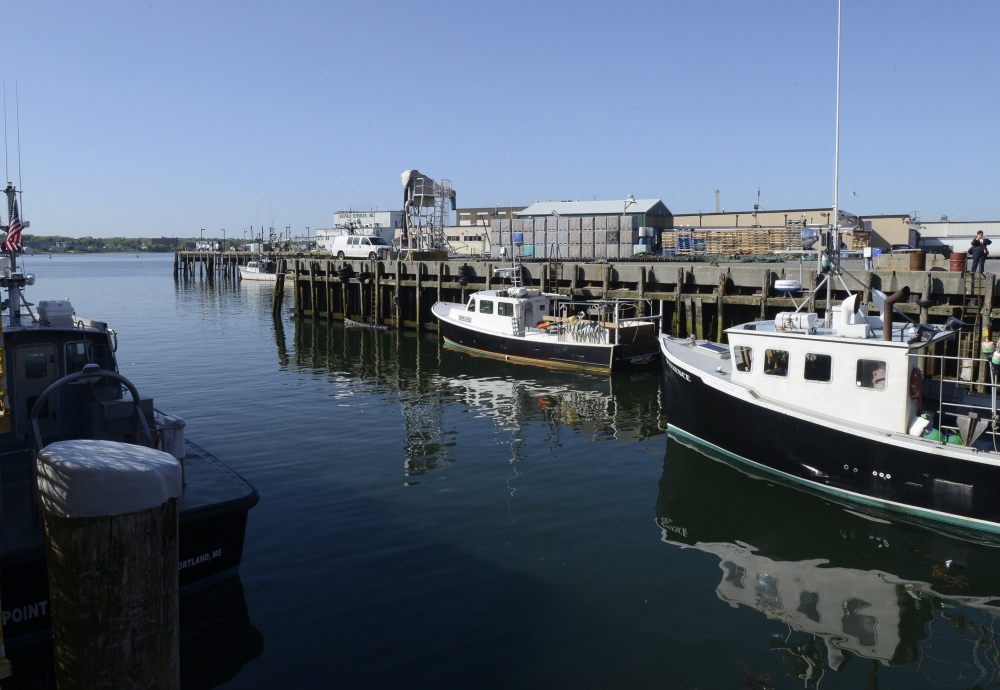Maine received two failing grades in a national “report card” issued Friday that gauges the prospects for manufacturing growth in each state.
The report, issued by Indiana-based Ball State University, says high worker-benefit costs, low productivity and a lack of innovation in Maine are responsible for dragging down the state’s overall manufacturing growth potential.
“It’s a terrible report card,” said Lisa Martin, executive director of the Manufacturers Association of Maine. “If I had ever brought home a report card like this, boy, oh boy.”
The university’s 2014 Manufacturing and Logistics National Report examines several factors that could foster or inhibit manufacturing growth in each of the 50 states. Ball State’s Center for Business and Economic Research has been producing the report annually since 2008. Maine’s overall grade was a C, the same as in 2013.
Maine received F grades this year in two categories: “productivity and innovation,” and “worker-benefit costs.”
The report’s author, Michael Hicks, said Maine’s failing grade in productivity likely stems from the prevalence of its fishing and agriculture industries, which generate relatively low revenue per worker.
“Those industries generate a lot less revenue per worker than, say, making microchips,” said Hicks, director of the Center for Business and Economic Research.
The state’s F in innovation is the result of relatively few dollars being spent by private industry and government on research and development, and a lower number of patents per capita than most other states, Hicks said.
Maine ranked 41st out of 50 states in research and development investment, and 36th in patents per capita, he said.
Hicks said he ranks states in a number of categories and then grades them based on a bell curve, assigning six states each A and F grades, and nine each of B and D grades. The 20 states in the middle fall into the C category.
Maine’s failing grade in worker benefit costs is based mainly on the high cost of health care, Hicks said. Maine ranks eighth-highest in the country in long-term health care costs, he said.
It also ranks sixth-highest in the cost of employee fringe benefits as a percentage of total income, he said, which is bad from an employer’s perspective.
“Fringe benefits are good for workers … but as a business it’s a problem,” Hicks said.
Maine’s greatest area of improvement from 2013 to 2014 is in what the report calls the “expected liability gap,” which refers to unfunded state and local obligations such as employee pension plans. Maine went from a D-minus to a C-plus in that category.
Hicks said the marked improvement is likely the result of a move in Maine to comply with new federal rules for government reporting of pension and debt obligations. States are not required to meet the new reporting standards until 2015, he said, and Maine was one of those that started early.
“Some states have yet to report,” Hicks said. “Maine was probably one of those that rushed to comply with the new standards.”
Two other weak categories in Maine are “global reach” (D), and “tax climate” (D-plus), according to the report.
Global reach has to do with the total value of international exports and the movement of goods from overeas, both areas in which Maine is relatively weak, Hicks said.
Maine’s high taxes have long been a deterrent to manufacturing growth, he said, which is an ongoing concern.
“I do worry about your tax climate,” Hicks said.
The state received a D-minus for the health of its logistics industry, which is tied to manufacturing because it deals with the transporting of goods from producers to consumers.
The primary factors in assigning logistics grades are miles of road and rail per capita, and overall spending on transportation infrastructure, both categories in which Maine did not fare well, Hicks said.
The state’s highest grade came in the category of “human capital,” which assesses workers’ education and skill level. The state got a B in that area.
Among the reasons for the state’s high grade is that it ranks sixth-highest in the U.S. for the number of workers per capita with at least a high school diploma, he said.
Maine also ranked 14th in highest average eighth-grade test scores, considered a bellwether of future manufacturing workforce strength, according to Hicks.
Overall, the report gave Maine a C grade for the health of its manufacturing industry.
“You’re right in the middle, and the middle isn’t a bad place to be,” he said.
Martin agreed that productivity and innovation are the two areas in which Maine needs the most improvement, but some progress is being made, she said.
For instance, the Manufacturing Association has partnered with Maine’s two state universities on an initiative to promote “job shops,” small manufacturing facilities that produce custom products for other businesses on a contract basis.
Job shops tend to promote innovation, Martin said, because they allow smaller companies to take risks on new, innovative products without the high cost of building a manufacturing facility.
“What do they call it … ‘Fail fast, fail cheap,'” she said.
Send questions/comments to the editors.




Comments are no longer available on this story